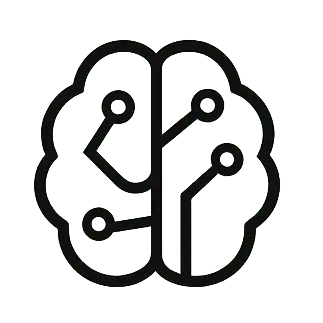TLDR: DIVER-0 is a novel EEG foundation model that addresses limitations in existing models by introducing full spatio-temporal attention, Rotary Position Embedding (RoPE) for temporal relationships, and binary attention biases for channel differentiation. Its key innovation, Sliding Temporal Conditional Positional Encoding (STCPE), ensures robust generalization across diverse electrode configurations and maintains consistent performance regardless of electrode ordering. The model achieves competitive results on various brain-computer interface tasks, even with significantly less pretraining data, highlighting its efficiency and practical value.
Electroencephalography (EEG) is a vital non-invasive technique used to measure the brain’s electrical activity, playing a crucial role in brain-computer interfaces and various clinical applications. However, existing EEG foundation models often struggle with accurately capturing the complex spatio-temporal dynamics of the brain and lack the ability to generalize robustly across different electrode configurations, which is a common challenge in real-world scenarios.
To address these significant limitations, researchers Danny Dongyeop Han, Ahhyun Lucy Lee, Taeyang Lee, Yonghyeon Gwon, Sebin Lee, Seongjin Lee, David Keetae Park, Shinjae Yoo, Jiook Cha, and Chun Kee Chung have introduced DIVER-0, a novel EEG foundation model. This model demonstrates that a unified approach to spatio-temporal attention, rather than separate spatial or temporal processing, can achieve superior performance when designed with specific innovations.
DIVER-0 incorporates two key design principles: Rotary Position Embedding (RoPE) to effectively model temporal relationships within EEG signals, and binary attention biases to differentiate between various channels. Furthermore, the model introduces Sliding Temporal Conditional Positional Encoding (STCPE). This advanced encoding method improves upon existing techniques by maintaining both temporal translation equivariance (meaning it performs consistently regardless of shifts in time) and channel permutation equivariance (meaning its performance is unaffected by the order of electrodes). This allows DIVER-0 to adapt robustly to arbitrary electrode configurations, even those not encountered during its initial training phase.
The architecture of DIVER-0 begins by dividing raw EEG signals into small, one-second patches. These patches undergo a two-step encoding process involving convolutional neural networks (CNNs) to extract temporal features, followed by a Fast Fourier Transform (FFT) to capture spectral characteristics. The outputs are then combined to create a unified patch representation. Following this, STCPE is applied, which dynamically generates positional information by sliding a transformer block across the temporal dimension, processing patches from all channels simultaneously.
The core of DIVER-0 is its DIVER encoder blocks, which utilize a full attention mechanism. Within these blocks, RoPE is used to understand the temporal relationships between different time points, while binary attention biases inform the model whether two electrodes represent the same channel. This allows the model to distinguish between different channels and timepoints effectively.
DIVER-0 was extensively pretrained on the Temple University Hospital EEG Corpus (TUEG), one of the largest publicly available EEG datasets. This massive dataset, comprising approximately 30,000 hours of EEG data, enabled the model to learn robust neural representations across diverse clinical populations. The preprocessing steps involved standard filtering and resampling to ensure data quality.
Experimental results highlight DIVER-0’s effectiveness. When finetuned on downstream tasks like emotion recognition (FACED dataset) and motor imagery classification (PhysioNet-MI dataset), DIVER-0 achieved competitive performance. Notably, it demonstrated strong results even when pretrained on only 10% of the TUEG corpus, showcasing its efficiency. For instance, on the FACED dataset, DIVER-0 outperformed existing foundation models like CBraMod in balanced accuracy.
A crucial advantage of DIVER-0 is its remarkable robustness to channel ordering. The model maintained consistent performance across various permutation conditions during both pretraining and finetuning, validating its claim of permutation equivariance. This property is vital for real-world applications where electrode montages can vary significantly across different research groups and clinical settings.
Also Read:
- Advancing EEG-Based Emotion Recognition with Spatial-Temporal Transformers and Adaptive Learning
- Advancing Epileptic Seizure Prediction with Minimal EEG Sensors
In conclusion, DIVER-0 represents a significant step forward in EEG foundation models. By introducing unified spatio-temporal attention with RoPE and binary attention biases, and the innovative Sliding Temporal Conditional Positional Encoding, it addresses critical limitations of previous models. Its ability to generalize robustly to unseen electrode configurations and maintain consistent performance regardless of channel ordering establishes key design principles for future EEG research. For more details, you can refer to the full research paper: DIVER-0: A Fully Channel Equivariant EEG Foundation Model.


